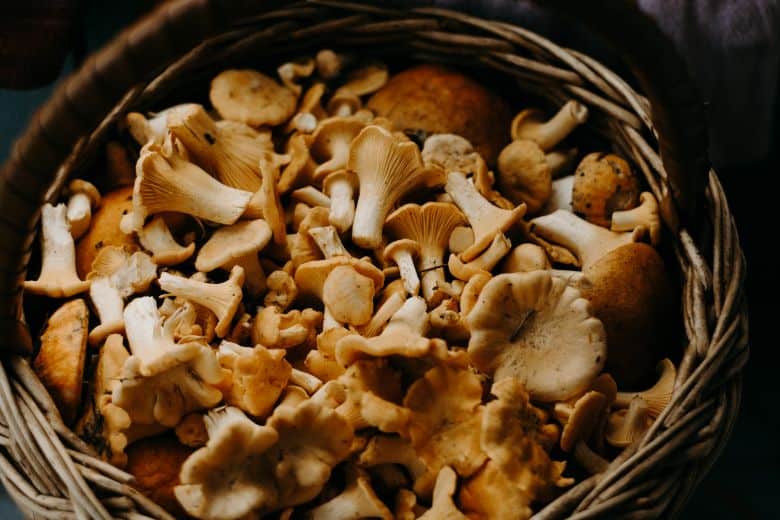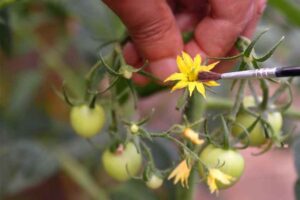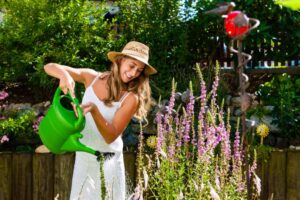
Edible mushrooms are a valuable and delicious addition to any meal in Minnesota. With over 90 species of edible mushrooms in the state, Minnesota is home to some of the most diverse and flavorful mushrooms in the country.
From the classic white button mushrooms to the more exotic varieties like chanterelles and oyster mushrooms, there is a plethora of flavors to choose from. Even more exciting is the ability to forage for mushrooms in the wild.
With a little knowledge and a keen eye for the right habitats, you can find a wide variety of delicious edible mushrooms in Minnesota.
Identification of Common Edible Mushrooms in Minnesota
Identifying common type of edible mushrooms in Minnesota can be a rewarding but potentially risky endeavor, as some edible mushrooms have toxic look-alikes. It’s crucial to exercise caution and use multiple reliable sources for identification before consuming any wild mushrooms. Here are some common edible mushrooms found in Minnesota:
- Morel Mushrooms (Morchella spp.): Morels are highly sought-after and easily identifiable due to their distinctive honeycomb appearance. They typically appear in the spring, often near hardwood trees like oak and elm.
- Chanterelle Mushrooms (Cantharellus spp.): Chanterelles are bright orange or yellow with a wavy cap and a distinctive, pleasant aroma. They grow in the summer and early fall, often in hardwood forests.
- Chicken of the Woods (Laetiporus spp.): Chicken of the Woods is a bracket fungus with bright orange-yellow shelves. It grows on trees, particularly oak, and is often used as a meat substitute due to its chicken-like texture and taste.
- Hen of the Woods (Grifola frondosa):Hen of the Woods, also known as Maitake, is a cluster of gray-brown fronds that resemble a hen’s feathers. It’s found at the base of hardwood trees, particularly oaks, in the fall.
- Puffball Mushrooms (Calvatia spp.): Puffballs are typically round, white mushrooms without a visible stalk. They grow in various habitats, including grassy areas and woods, and should be harvested while young and before they turn brown inside.
- Shaggy Mane (Coprinus comatus): Shaggy Manes have long, shaggy white caps that turn inky black as they mature. They are often found in lawns and disturbed areas in the late summer and early fall.
- Lion’s Mane (Hericium erinaceus): Lion’s Mane has long, white, shaggy spines that resemble a lion’s mane. It grows on hardwood trees, typically in late summer and fall. It’s known for its mild, seafood-like flavor.
- Black Trumpet (Craterellus cornucopioides): Black Trumpets are dark brown to black, funnel-shaped mushrooms. They are often found on the forest floor, especially in late summer and fall.
- Bolete Mushrooms (Boletus spp.): Boletes are a diverse group of mushrooms, and some species are edible. Look for mushrooms with a cap, stem, and spongy underside (pores) rather than gills. Edible boletes are typically found in forests and woodlands.
Note: Remember that while these mushrooms are generally considered edible, there can be variations in taste and edibility based on the species and individual sensitivities. Additionally, some toxic mushrooms can resemble edible ones closely, so it’s essential to be 100% certain of your identification or consult with an experienced mycologist before consuming wild mushrooms.
Nutritional Value of Edible Mushrooms In Minnesota
Edible mushrooms are a nutritious and delicious way to enjoy Minnesota’s natural abundance. Not only are they tasty, but they also offer a variety of health benefits.
Rich in vitamins and minerals, mushrooms are a great source of fiber, protein, and antioxidants, helping protect your body from disease.
They are also low in calories and fat, making them an ideal addition to any nutritious diet.
Plus, Minnesota’s unique climate and environment are perfect for growing a wide variety of edible mushrooms, giving people access to a variety of different flavors and textures.
So, whether you’re looking for a tasty side dish or a nutritious addition to your meal, consider the nutritional value of edible mushrooms in Minnesota.

Foraging for Edible Mushrooms In Minnesota
Foraging for edible mushrooms in Minnesota is a great outdoor activity for those looking to add a new twist to their foraging experience. With a variety of edible mushrooms available in the state, anyone can explore the wild and find some delicious and nutritious edibles. From chanterelles to oysters, you can find a wide range of mushrooms to collect and enjoy.
Here are some tips for foraging edible mushrooms in Minnesota:
1. Educate Yourself:
Before you start foraging, invest time in learning about the different types of mushrooms found in Minnesota, both edible and toxic varieties. Consider taking a mycology class or joining a local mushroom club to gain knowledge and experience.
2. Use Reliable Field Guides:
Carry a trustworthy field guide or mushroom identification book specific to your region. These guides often include photographs, descriptions, and details on habitat and seasonality.
3. Start with Easy-to-Identify Species:
If you’re a beginner, focus on mushrooms that are easy to identify and have few or no poisonous look-alikes. Morel mushrooms are a good starting point, as they are distinctive and relatively safe to forage.
4. Habitat Matters:
Learn about the preferred habitats of edible mushrooms. Many edible species have specific tree associations, soil types, or ecological niches. For example, morels often grow near oak, elm, and poplar trees.
5. Timing Matters:
Different mushroom species fruit at various times of the year. Keep in mind that spring, summer, and fall are the primary seasons for mushroom foraging in Minnesota. Timing your forays to coincide with the fruiting of specific species can increase your chances of success.
6. Respect Local Regulations:
Be aware of any regulations or restrictions on mushroom foraging in specific areas, such as state parks or wildlife management areas. Some places may have rules to protect fragile ecosystems.
7. Leave No Trace:
Practice responsible foraging by minimizing your impact on the environment. Use a knife or scissors to cut mushrooms rather than pulling them out, and avoid damaging the mycelium (the fungus’s underground network). Leave the environment as you found it.
8. Double-Check Your Finds:
Always double-check your identifications, even if you are confident in your skills. Some toxic mushrooms can closely resemble edible ones. When in doubt, don’t consume the mushroom.
9. Start Small:
If you’re new to foraging, start with small quantities of any new mushroom you try, as some individuals may have sensitivities or allergies to specific species.
10. Cook Thoroughly:
Properly cook all wild mushrooms before consumption. Cooking helps break down potential toxins and can make even some slightly toxic mushrooms safe to eat.
11. Share Your Findings:
If you’re unsure about the identification of a mushroom, share photos and descriptions with experienced foragers or mycologists for confirmation.
12. Be Patient and Persistent:
Mushroom foraging can be unpredictable. Some years may yield more mushrooms than others, depending on weather conditions and other factors. Be patient and persistent in your quest.
Note: Always prioritize safety and proper identification when foraging, and never consume any wild mushroom unless you are certain of its edibility.
Cooking with Edible Mushrooms In Minnesota
Mushrooms may not be the first thing that come to mind when you think of Minnesota cuisine, but they are a surprisingly versatile ingredient.
From wild morels to cultivated varieties, Minnesota is home to a diverse array of edible mushrooms that have been used for centuries to add flavor and texture to dishes.
Whether you are an experienced forager or just getting started, there are plenty of recipes that take advantage of Minnesota’s diverse mushroom selection.
From soups and stews to sauces and sides, let’s explore the exciting possibilities of cooking with edible mushrooms in Minnesota.
Health Benefits of Eating Edible Mushrooms In Minnesota
Eating edible mushrooms, including those found in Minnesota, can offer various health benefits. While the specific nutritional and health properties of mushrooms may vary depending on the species, here are some general health benefits associated with consuming edible mushrooms:
1. Nutrient-Rich:
Edible mushrooms are a good source of essential nutrients, including vitamins, minerals, and dietary fiber. They are particularly rich in B-vitamins (such as riboflavin, niacin, and pantothenic acid), potassium, selenium, and copper.
2.Low in Calories:
Most edible mushrooms are low in calories and fat, making them an excellent addition to a balanced diet for those looking to manage their weight.
3. Antioxidant Properties:
Some edible mushrooms, such as shiitake and maitake, contain antioxidants like ergothioneine and selenium, which can help protect cells from oxidative damage and reduce inflammation.
4. Immune Support:
Certain mushrooms, like reishi and maitake, have been associated with immune-boosting properties. They may enhance the body’s immune response and help protect against illnesses.
5. Heart Health:
Mushrooms are naturally low in sodium and high in potassium, which can contribute to healthy blood pressure levels. Additionally, they contain compounds like beta-glucans that may help lower cholesterol levels.
6. Digestive Health:
Mushrooms are a good source of dietary fiber, which can promote digestive regularity and support a healthy gut microbiome.
7. Weight Management:
The high fiber content in mushrooms can help you feel full and satisfied, potentially reducing overall calorie intake and supporting weight management efforts.
8. Rich in Protein:
While not as protein-rich as animal products, some mushrooms, such as oyster and shiitake mushrooms, provide a notable amount of plant-based protein, making them a valuable addition to vegetarian and vegan diets.
9. Vitamin D:
Some mushrooms, like shiitake and maitake, can naturally produce vitamin D when exposed to sunlight or UV radiation. Consuming these mushrooms can be a source of vitamin D for individuals with limited sun exposure.
10. Potential Anti-Cancer Effects:
Certain mushrooms contain bioactive compounds, such as beta-glucans and polysaccharides, which have shown promise in laboratory studies for their potential anti-cancer effects. However, more research is needed to fully understand their impact on human health.
11. Mental Health:
Some mushrooms, like lion’s mane, have gained attention for their potential cognitive benefits. They may support brain health and cognitive function, although further research is required to confirm these effects.
However, health benefits of mushrooms can vary depending on the species and how they are prepared and consumed. Additionally, while edible mushrooms can offer many health advantages, it’s essential to enjoy them as part of a balanced diet and not rely solely on them for meeting your nutritional needs.
Besides, if you have allergies, sensitivities, or specific health concerns, consult with a healthcare professional before incorporating new foods into your diet, including wild mushrooms.
Frequently Asked Questions
Are all mushrooms found in Minnesota edible?
Answer: No, not all mushrooms found in Minnesota are edible. It is important to consult a field guide and an expert before attempting to identify and consume any mushrooms found in the wild.
Is it legal to forage for mushrooms on public lands in Minnesota?
Answer: ” Yes, it is legal to forage for mushrooms on public lands in Minnesota, but foragers should be aware of local regulations, be respectful of the land and take only a small amount of mushrooms.
How do I store mushrooms I find in Minnesota?
Answer: Mushrooms found in Minnesota should be stored in a paper bag or wax paper in the refrigerator for up to a week. If the mushrooms are not going to be used within a week, they can be dried or frozen for longer storage.
Conclusion
Minnesota is home to a wide variety of edible mushrooms that can be harvested from the wild. Mushrooms are a great source of vitamins, minerals, and other nutrients, and they can be used in a variety of recipes. While some species of mushrooms can be dangerous to eat, many of the edible species are safe and delicious. With the right knowledge and precautions, it is possible to safely enjoy the many types of edible mushrooms that Minnesota has to offer.




2 Comments